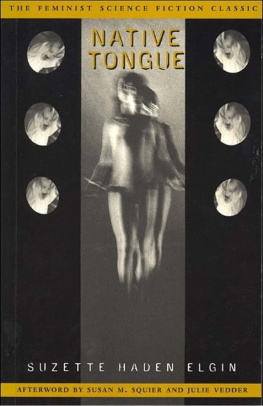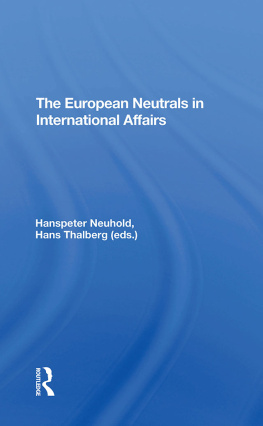This is a copy of Galinee's map of 1670, the first made from actual exploration in which Lake Erie appears. It was printed in Faillon's "Histoire de la Colonie Franaise," and in "The History of the Early Missions in Western Canada." The plate was very kindly placed at the service of the Elgin Historical and Scientific Institute, for use in this work by the Very Reverend Dean Harris, the author of the last mentioned book.
The following explanations refer chiefly to the western portion of the map:
Title: "Map of the country visited by Messrs. Dollier de Casson and de Galinee, missionaries of St. Sulpice, drawn by the same M. de Galinee. (See M. Talon's letter 10th November, 1670)." L. Huron: "Michigan or Fresh-Water Sea of the Hurons." (These lakes were erroneously supposed to be but one). N. End: "Bay of the Pottawatamies." Islands near Mackinac: "I entered this bay only as far as these islands." W. of St. Clair River: "Great hunting ground." At Detroit: "Here was a stone, idol of the Iroquois, which we broke up and threw into the water." Essex Peninsula: "Large prairies." Lake Erie: "I mark only what I have seen." Long Point: "Peninsula of Lake Erie." North Shore Opposite: "Here we wintered." The Bay Opposite: "Little Lake Erie." Grand River: "Rapid River on Tina-Toua." East Side Grand River: "Excellent land." West Side Grand River: (up the river): "The Neutral Nation was formerly here." West of Burlington Bay: "Good land." Niagara River: "This current is so strong that it can hardly be ascended." At its Mouth: "Niagara Falls said by the Indians to be more than 200 feet high." Lake Ontario: "I passed on the south side, which I give pretty accurately." North Shore: "Mr. Perot's encampment. Here the missionaries of St. Sulpice established themselves."
THE COUNTRY OF THE NEUTRALS.
Table of Contents
BY
JAMES R. COYNE.
Table of Contents
In that part of the township of Southwold included in the peninsula between Talbot Creek and the most westerly bend of Kettle Creek there were until a relatively recent date several Indian earthworks, which were well-known to the pioneers of the Talbot Settlement. What the tooth of time had spared for more than two centuries yielded however to the settler's plough and harrow, and but one or two of these interesting reminders of an almost forgotten race remain to gratify the curiosity of the archologist or of the historian. Fortunately, the most important of all is still almost in its original condition. It is that, which has become known to readers of the Transactions of the Canadian Institute as the Southwold Earthwork. It is situated on the farm of Mr. Chester Henderson, Lot Number Four North on Talbot Road East. Mr. David Boyle in the Archological Reports printed in 1891 has given the results of his examinations of the mounds. A carefully prepared plan made from actual survey by Mr. A. W. Campbell, C.E., for the Elgin Historical and Scientific Institute of St. Thomas, was presented by the latter to the Canadian Institute.[1] These will together form a valuable, and, it is hoped, a permanent record of this interesting memorial of the aboriginal inhabitants of South-western Ontario.
The writer of this paper has been acquainted with "the old fort," as it was called, since the year 1867. At that time it was in the midst of the forest. Since then the woods have been cleared away, except within the fort and north of it. Indeed, a considerable number of trees have been felled within the southern part of the enclosure. In the mounds themselves trees are abundant, and there are many in the moat or ditch between. The stumps of those which have been cut down are so many chronological facts, from which the age of the fort may be conjectured with some approach to accuracy. A maple within the enclosure exhibits 242 rings of annual growth. It was probably the oldest tree within the walls. A maple in the outer embankment shows 197 rings; between the inner and outer walls a beech stump shows 219 rings, and an elm 266. Many of the trees were cut down a good many years ago. Judging from these stumps, it would be safe to calculate the age of the forest at about two hundred years, with here and there a tree a little older. The area enclosed is level. In the field south there are numerous hummocks formed by the decayed stumps of fallen trees. The walls were manifestly thrown up from the outside. There is an exception on the south-east. Here the ground outside was higher, and to get the requisite elevation the earth was thrown up on both walls from the intervening space, as well as on the exterior wall from the outside. Each of the walls runs completely round the enclosure, except where the steep bank of the little stream was utilized to eke out the inner wall for five or six rods on the west side, as shewn on the plan. Opposite the south end of this gap was the original entrance through the outer wall. The walls have been cut through in one or two other places, doubtless by settlers hauling timber across them.
The writer accompanied Mr. Campbell on his visits in the spring and fall of 1891. The members of the Elgin Historical and Scientific Institute made a pretty thorough examination of a large ash-heap south-east of the fort. It had, however, been frequently dug into during the last score or two of years, with ample results, it is said, in the way of stone implements of various kinds. There still remained, however, arrow-heads and chippings of flint, stones partially disintegrated from the action of heat, fragments of pottery whose markings showed a very low stage of artistic development, fish scales, charred maize and bones of small animals, the remains of aboriginal banquets. Within the enclosure, corn-cobs were found by digging down though the mould, and a good specimen of a bone needle, well smoothed, but without any decoration, was turned up in the bed of the stream where it passes through the fort.
The original occupants were manifestly hunters, fishermen and agriculturists, as well as warriors. Nothing appears to have been found in the neighborhood, pointing to any intercourse between them and any European race.
It would seem that the earth-work was constructed in the midst of a large clearing, and that the forest grew up after the disappearance of the occupants. A few saplings, however, may have been permitted to spring up during their occupancy for the sake of the shelter they might afford. These are represented by the oldest stumps above mentioned.
The question, who were the builders, is an interesting one. To answer it we need not go back to a remoter period than the middle of the seventeenth century, when the Iroquois after destroying the Huron Settlements turned their attention to the southwest, and the Neutral Nation ceased to exist. The enclosure was, we may reasonably believe, a fortified village of the Neutrals at the time of their evacuation of this province, nearly a quarter of a millennium ago.












